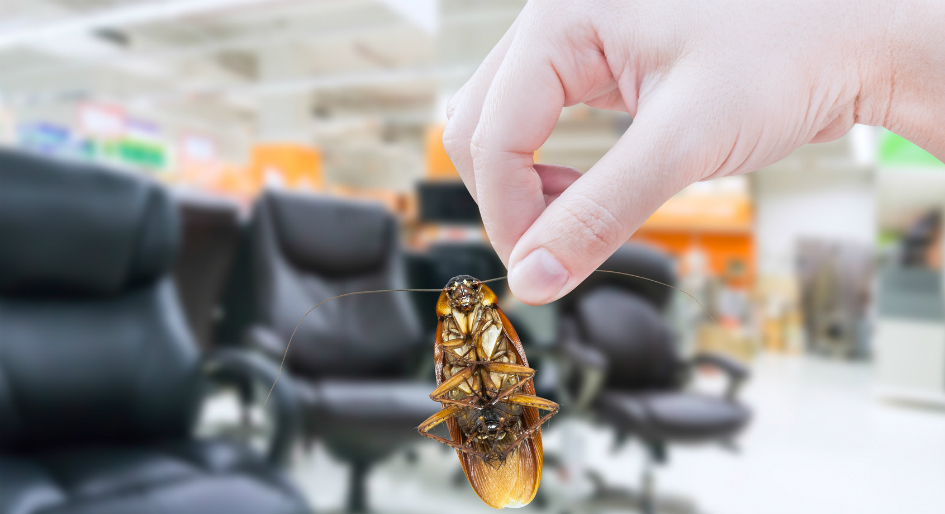As businesses and offices begin to reopen after coronavirus lockdowns, following appropriate health and safety guidelines is at the top of everyone’s mind, and the cleanliness of these facilities is more important than ever as the world returns to work. For building operators and owners, pest management should be a critical piece of any reopening plan, so customers and employees have one less worry when returning to the office.
While employees and tenants in communities across the country have sheltered at home over the last few months, pests may have found new homes in unpopulated facilities. As tenants return to the office, knowing the signs of pest presence, who to reach out to for assistance, and how to prevent future pest issues can all be helpful.
Know the Signs of Pests
Knowing the signs of pests is the first step in determining whether you’ve had uninvited guests in your space during closures. Nests under eaves, on ledges or unscreened vents and droppings near the building are signs birds have taken up residence in or around your facility. While not always considered a “pest,” birds do present certain risks. Their droppings can cause health concerns for humans while also being a slip hazard on sidewalks. Plus, bird droppings contain acids that are corrosive to building exteriors and sidewalks. Wasps are more active in the warmer months, and signs of wasps can be paper or mud nests on ledges or overhangs and gaps in walls. Wasps concentrated in one specific area can be a sign that their nest is nearby.
Rodents, on the other hand, are some of the worst offenders when it comes to pests on any property. They prefer warm, dark and undisturbed spaces to make their homes. With cities in lockdown and facilities being closed, the decrease in human activity has sent rodents looking for new food sources and shelters. Food storage bins or garbage cans offer a good meal to rodents now that restaurant closures mean less food being thrown away. You’ll also want to look for trails of grease or trodden paths in the foliage outside a building as a sign of rodent presence.
Be sure to pay attention to places with high moisture opportunities such as sink drains and other kitchen areas, as areas that have not been in use for a while can easily be breeding grounds for insects. For those that are in use, the dampness can trap organic material which will attract flies and rodents. Cockroaches also love warm dark spaces, so if any countertop appliances, such as coffee makers, were left plugged in during building closures, be sure to check for cockroaches and ants and clean them thoroughly in accordance with the machine’s instructions.
Reach Out for Help If Needed
Your established pest management professional should be the first call you make after finding evidence of pest activity in your facility during lockdown. The technician’s knowledge of your pest history will be helpful for diagnosing and solving issues in a timely manner. Your pest management provider will likely want to see and evaluate any evidence of pest activity you may have found, as this is critical in identifying the right solution. If you do not have a pest management provider, research what types of buildings a potential company services as well as where their branch locations are so they can conveniently get to you when needed.
Prevent Future Issues
To help keep pests out of your building, make sure the landscaping surrounding the building is trimmed and maintained. Unkempt landscaping can provide homes for pests right outside your building, as well as create a bridge for pests to get from the ground or trees into the building.
Be sure outdoor trash receptacles are placed away from the building, and indoor trash cans are emptied daily whenever people are in the buildings. Rinse out trash bins at least once a week, as organic material can build up at the bottom of trash cans and attract flies.
Ensure all cracks, holes, and vents on exterior walls are caulked and sealed properly, as many pests can utilize these unexpected entry points. Doors that are not properly sealed can also be inviting spots for pests to make their way inside.
Developing a reopening plan for your facility may seem daunting but assessing your property’s position with pest management should not be. These tips can help you make informed decisions and ensure a pest-free environment for your tenants when they return to your building. Should you see signs of pests again, call your pest management provider immediately to establish a plan and solution for your building.
Alice Sinia, Ph.D. is quality assurance manager of regulatory/lab services for Orkin Canada, focusing on government regulations pertaining to the pest control industry. With more than 20 years of experience, she manages the quality assurance laboratory for Orkin Canada and performs analytical entomology as well as provides technical support in pest/insect identification to branch offices and clients. For more information, email Alice Sinia at asinia@orkincanada.com or visit orkincanada.com








